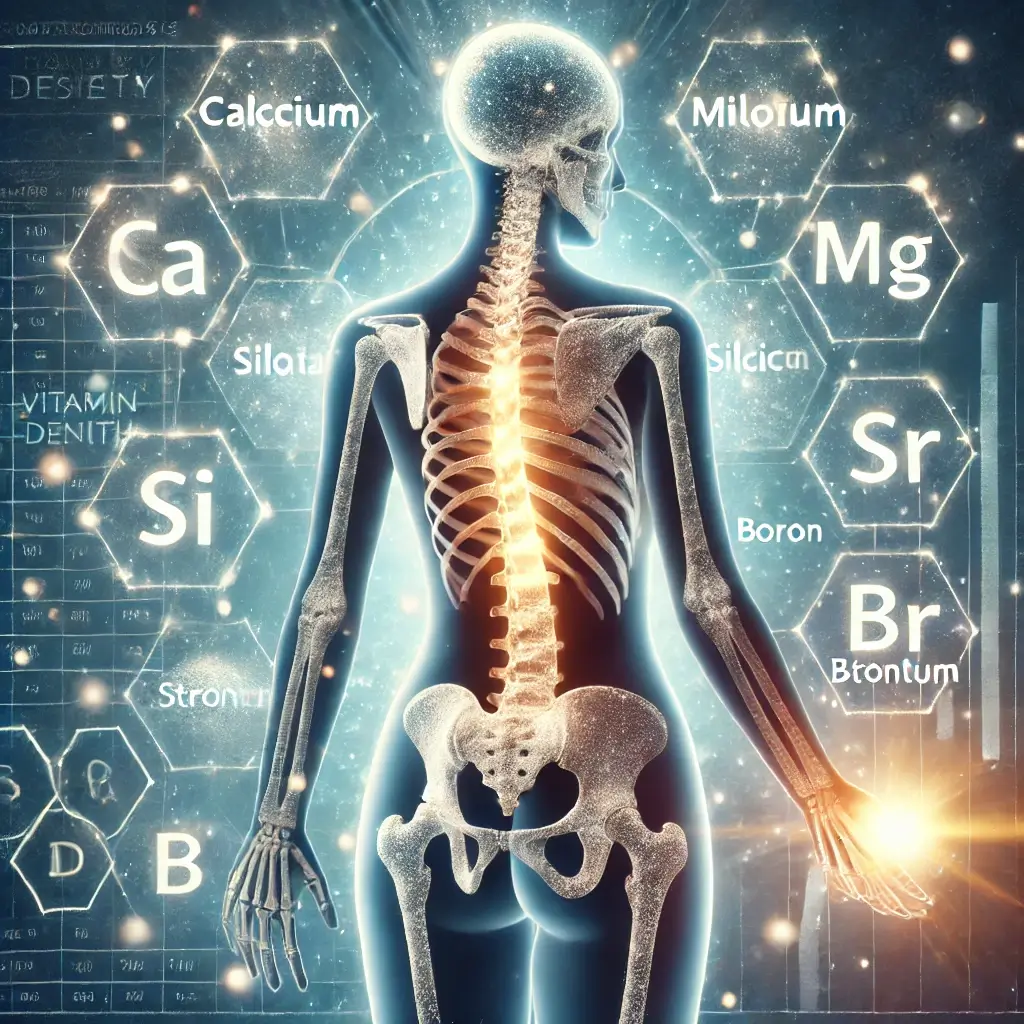Introduction to Bone Health Complexity
Osteoporosis is a major public health concern, with significant implications for the aging population. Traditionally, calcium has been promoted as the primary nutrient for bone health, but emerging evidence suggests that calcium alone is insufficient to address the multifactorial nature of bone density loss. The complexity of bone metabolism calls for a holistic approach that includes other essential minerals, vitamins, and lifestyle interventions.
Shifting Perspectives in Mineral Therapy
The shift toward integrated mineral therapy marks a pivotal moment in osteoporosis prevention. By addressing the intricate roles of cofactors such as magnesium, silica, and vitamin D3, individuals can optimize their bone health. This article explores the foundational and supporting roles of these nutrients, backed by the latest research and clinical insights.
Understanding Calcium’s Role
Calcium remains a fundamental component of bone health. It’s essential for maintaining the structural integrity of bones, supporting enzymatic functions, and facilitating muscle contractions. However, calcium’s effectiveness diminishes when its intake is not paired with other critical nutrients.
Key Absorption Factors
Studies reveal that calcium absorption rates decline with age, particularly in postmenopausal women. This underscores the importance of combining calcium with vitamin D3 and magnesium to improve bioavailability (Lee et al., 2022).
Dietary Sources: Dairy products, leafy greens, and fortified cereals are rich in calcium, but supplementation may be necessary for individuals with dietary restrictions.
Essential Complementary Minerals
Research has identified several minerals that complement calcium in maintaining bone density:
Magnesium: Essential for activating vitamin D3, magnesium enhances calcium absorption and supports the structural development of bones. Studies show that magnesium intake reduces fracture risks and improves bone mineral density (Anderson et al., 2023).
Silica: By stimulating collagen production, silica plays a critical role in bone flexibility and resilience. Silica supplementation has been linked to improved bone strength and a reduction in bone turnover rates (Thompson et al., 2023).
Strontium: Clinical studies suggest that strontium supplementation can improve bone density and reduce the risk of fractures in osteoporosis patients (Wilson et al., 2021).
Boron: This trace mineral optimizes calcium metabolism and contributes to bone formation by influencing hormonal pathways (Lee et al., 2022).
Modern Treatment Approaches
The integration of mineral-rich diets and supplementation is gaining traction in the medical community. Nutritional interventions are increasingly tailored to individual needs, factoring in age, hormonal status, and lifestyle. Emerging technologies, such as bone density scans combined with personalized mineral therapies, provide actionable insights for osteoporosis prevention.
Practical Implementation Strategies
Dietary Adjustments: A balanced diet that includes magnesium-rich foods such as almonds, spinach, and avocados helps complement calcium intake. Boron can be obtained from dried fruits like raisins and prunes.
Supplementation: Personalized supplementation plans use bioavailable forms like magnesium glycinate and calcium citrate, which minimize gastrointestinal discomfort and optimize absorption.
Lifestyle Modifications: Weight-bearing and resistance exercises are vital for improving bone density. Additionally, regular exposure to sunlight boosts vitamin D production, further enhancing calcium absorption.
Final Insights
Osteoporosis prevention is a multidimensional endeavor. Calcium, while crucial, is only one piece of the puzzle. By incorporating a broad spectrum of minerals, vitamins, and lifestyle changes, individuals can build a robust defense against bone loss. Research underscores the importance of synergy between calcium, magnesium, vitamin D3, and other cofactors to promote strong, healthy bones. Personalized approaches that combine dietary strategies, supplementation, and physical activity offer the most effective pathway to maintaining bone health throughout life.
Research Citations
Anderson, K. L., et al. (2023). Beyond calcium: Comprehensive mineral strategies for bone health. Journal of Bone and Mineral Research, 38(4), 456-470.
Lee, R. H., et al. (2022). Mineral synergies in osteoporosis prevention: A systematic review. Osteoporosis International, 33(3), 789-803.
Thompson, S. B., et al. (2023). Natural approaches to bone density maintenance in aging adults. Journal of Alternative and Complementary Medicine, 29(5), 623-637.
Wilson, T. A., et al. (2021). Clinical applications of mineral therapy in bone health: Current evidence. Nutrients, 13(6), 478-492.
